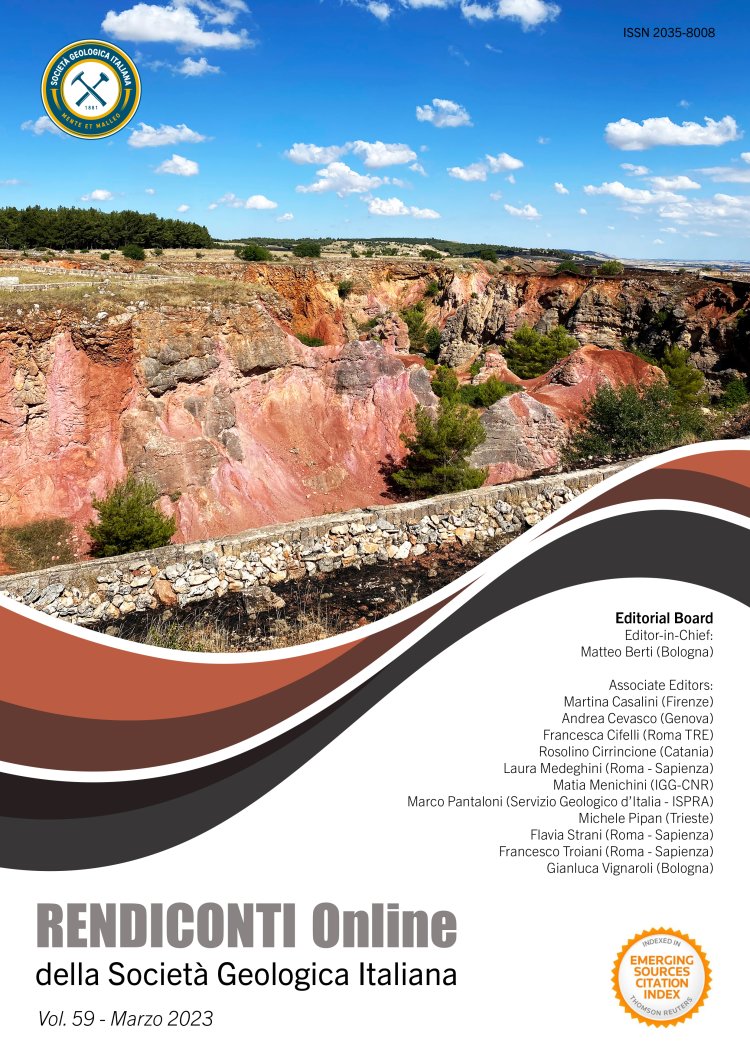
Biosedimentary and palaeoecological characterization of Norian bioconstructions (Western Tethys, North Calabria)
Mario Borrelli1, Elena Manzo2, Pierluigi Santagati1 & Edoardo Perri1
1Dipartimento di Biologia, Ecologia e Scienze della Terra, Università della Calabria, Arcavacata di Rende, Cosenza, Italy.
2Shell, Carel van Bylandtlaan 16, 2596 HR The Hague, the Netherlands.
Corresponding author e-mail: mario.borrelli@unical.it
DOI: https://doi.org/10.3301/ROL.2023.08
Volume: 59/2023
Pages: 49-55
Abstract
In a Norian-Rhaetian carbonate system of the Western Tethys realm, cropping out in the Monte Cocuzzo tectonic window (North Calabria), a stratigraphic section through the margin setting of the early-middle Norian depositional unit was investigated. The section shows a trend of facies, starting with scattered small-scale isolated microbial and skeletal boundstones (corals, algae, sponges) interbedded with bioclastic/peloidal packstones and grainstones, evolving toward meter-scale, patch reefs and coarser breccias composed of reef-derived clasts. Globose clusters of sponges (Olangocoeliidae), encrusting red algae (Solenopora) and microbial crusts, all binding peloidal-bioclastic packstones, represent the starting-phase of the bioconstruction, followed by the progressive increasing of two genus of pennulate corals: Retiophyllia sp. (colonial) and Distichophyllia sp. (isolate). The oligotypic biota assemblage and the presence of pennulate corals, indicate a shallow water environment of deposition, underneath the fair-weather wave-base depth, characterized by stressed environmental conditions with disphotic and eutrophic waters.
Keywords
Get Full Text